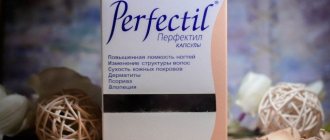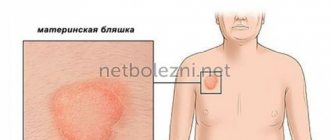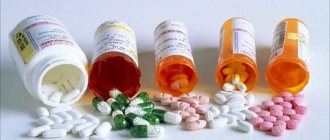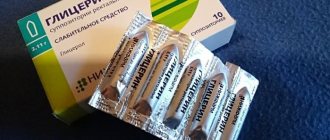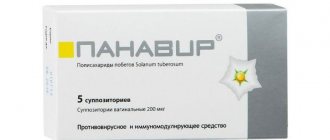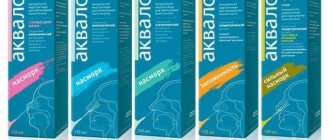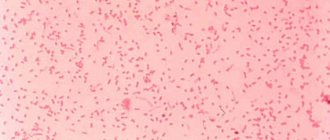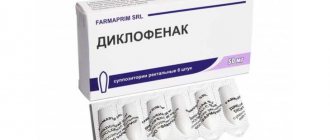What is the mechanism of drug action
The ointment has 3 main effects. It promotes tissue healing, affects metabolism and relieves inflammation. After contact with the wound area, the active substance interacts with the main proteins, for example, albumin. The active substance is involved in processes such as carbohydrate and lipid metabolism, the formation of hormones, mediators and porphyrins. "Dexpanthenol" has a regenerative effect not only on tissues, but also on mucous membranes. The drug also helps stabilize cellular metabolism and accelerate cell mitosis. Elimination is very fast.
Description of the drug
External dosage forms of Dexpanthenol are actively used to treat patients by traumatologists, dermatologists, and allergists.
Ointments and creams are prescribed for skin damage caused by mechanical stress or exacerbation of chronic pathology. The therapeutic properties are based on the action of its main component of dexpanthenol preparations. It is a precursor to propionic acid, a powerful stimulator of regeneration. After applying the ointment to the skin, it is quickly absorbed and accelerates metabolic processes.
The inclusion of drugs in therapeutic regimens helps to quickly eliminate all symptoms of skin pathologies:
- sharp, dull, aching pain;
- discomfort, including skin itching and burning;
- swelling of various localizations;
- redness;
- peeling of the epidermis;
- isolated pimples and profuse rashes;
- excessive dry skin.
The pharmacy assortment includes many structural analogues of Dexpanthenol, produced in Russia and abroad. As a rule, their cost is much higher with identical therapeutic effects.
Pharmacological group and action
Patients often ask doctors whether Dexpanthenol is a hormonal ointment or not. The drug does not contain steroid hormones that cause serious side effects. It is included in the clinical-pharmacological group of drugs - regeneration stimulants. When this drug interacts with the epidermis, the active ingredient is converted to pantothenic acid.
This bioactive compound is characterized by a large number of positive properties:
- stimulation of the production of glucocorticosteroids, which effectively eliminate allergy symptoms;
- the formation of antibodies that destroy infectious and allergic agents that enter the body;
- participation in redox reactions;
- improved absorption of water- and fat-soluble vitamins;
- normalization of innervation by accelerating the biosynthesis of neurotransmitters.
Having penetrated into pathological foci, the main ingredient accelerates the metabolism of fats, proteins, and carbohydrates. It has a powerful reparative effect, exhibits anti-edematous and anti-inflammatory activity. By improving blood circulation, damaged tissues receive the nutrients and bioactive substances necessary for their healing.
Release form and composition
The active ingredient of the drug is dexpanthenol, the concentration of which is 5%.
The ointment base is formed by petroleum jelly, water, beeswax, white paraffin, cetyl and stearyl alcohols. Dexpanthenol also contains cosmetic almond oil. This ingredient has pronounced moisturizing and aseptic properties. The therapeutic effect of the external agent is enhanced by lanolin, an organic substance from sheep’s wool. It is able to suppress the activity of pathogenic fungi and pathogenic bacteria, disinfect and disinfect the skin.
Patients ask dermatologists the question of what is better - cream or ointment, which form has the best effect:
- The cream effectively helps accelerate tissue regeneration in small areas of the body. It is evenly distributed in the upper layer of the epidermis, exhibiting prolonged therapeutic activity. The cream is also advisable to use for preventive purposes to protect against wind, cold, and ultraviolet radiation;
- the ointment has a more pronounced regenerating effect. Its components are absorbed into the deepest epidermal layers, accumulating in maximum therapeutic concentration. The ointment is prescribed to patients for the treatment of deep cracks, cuts, and severe burns.
Russian manufacturers produce the drug in 30 g packaging. Primary packaging is an aluminum tube placed in a cardboard box along with an annotation. Dexpanthenol retains its healing properties for 24 months if the seal of the tube is not broken.
When to use
"Dexpanthenol" is most often used to accelerate healing for minor microtraumas. Can be used on mucous membranes in the presence of erosions. The drug helps fight dry and cracked skin and is indicated for burns and minor abrasions. Sometimes the ointment is prescribed to patients with bullous dermatitis, suppuration and trophic ulcers. It is allowed to be used for the treatment and prevention of bedsores in bedridden patients. The ointment is applied to aseptic wounds for transplantations that do not take root well after operations, but constant monitoring by the attending physician is required.
Instructions for use
The product is applied externally up to four times a day.
However, if necessary, it can be used more often.
Dexpanthenol is applied to the affected area, after which it is lightly rubbed.
- For mild burns, ointment can be applied from the first minutes. Make slow and smooth rubbing movements.
- If the ointment is used for skin inflammation, you must first treat the area with any antiseptic solution (except hydrogen peroxide).
- Women during the lactation period should apply ointment to the nipple every time after feeding.
- To combat or avoid diaper rash, the skin of infants is treated with the drug after changing clothes or a hygienic water procedure with soap. It is highly undesirable to wipe the baby’s skin with wet wipes, so as not to provoke greater irritation.
of allergies may occur - hives, itching.
How to use for pregnant women and children
Use in children is no different from adults.
The ointment is approved for use by pregnant and lactating women. For treatment in the breast area around the areola in women during breastfeeding, Dexpanthenol is recommended in the form of compresses. Before starting feeding, it is necessary to remove the remaining ointment with running water, without using soap, which can dry out the treated area.
"Dexpanthenol" is also necessary for restoring the skin from diaper rash in newborns.
Dexpanthenol
Tissue regeneration stimulator dexpanthenol is a derivative of pantothenic acid, known as vitamin B5. The drug is available in the form of an ointment for external use and is used in the treatment of skin injuries of various origins: wounds, burns, abscesses, dermatitis, etc. It is used in the care of newborns and infants, in the treatment and prevention of inflammation of the nipples during breastfeeding. The drug takes an active part in the processes of oxidation and acetylation, plays an important role in the metabolism of carbohydrates and fats, and participates in the synthesis of corticosteroids, acetylcholine, and porphyrins. Has an accentuated effect on the formation of epithelial tissue. Endowed with moderate anti-inflammatory activity. Dexpanthenol is an almost ideal drug for caring for the mammary gland during lactation. Clinical studies have shown that a seven-day course of treatment with dexpanthenol is enough to reduce pain in the nipples by 35 (!) times, and the effectiveness of pharmacotherapy using this drug is close to 100%. When using dexpanthenol ointment by nursing mothers, a thin layer of it was applied to the surface of the nipple and adjacent skin at the end of each act of feeding. Pediatrics is another wide area of application of this drug. We are talking here, first of all, about the heat rash of newborns, which appears due to clogging of the sweat glands with sebum. The traditional localization of miliaria is the face and upper torso. It looks like rashes with cheesy or watery contents. This disease is successfully treated with dexpanthenol, regularly applied to the affected areas of the skin. The drug quite easily copes with chapping of the skin, which occurs due to exposure of the baby’s skin to adverse weather factors (low temperatures, strong wind, etc.) and manifests itself in the form of redness and dryness of the unprotected skin of the face and hands. A very common problem for young mothers is diaper dermatitis in their babies, which is an acute irritation of the skin in areas of contact with diapers or diapers.
Most often, diaper dermatitis develops in girls, and in general its prevalence in newborns and infants reaches 50%. In children who are breastfed, diaper dermatitis is less common, because their feces have low enzymatic activity. To avoid the occurrence of this disease, it is recommended to use various protective agents at each diaper change, a striking example of which is dexpanthenol. The vitamin component of the drug accelerates the healing of dermatological microtraumas, while providing (which is a kind of “trick” of vitamin B5, since it is not an antibiotic) a bactericidal effect. Clinically significant negative side effects with the use of dexpanthenol have not yet been recorded in medical practice. One of the studies on the effectiveness of the use of dexpanthenol in children suffering from atopic dermatitis was conducted at the allergy department of the Federal State Budgetary Institution Research Institute of Nutrition of the Russian Academy of Medical Sciences. As a result of the use of dexpanthenol, a significant improvement in the condition of the skin of children was noted: hyperemia decreased, dry skin decreased, and skin itching disappeared. Elimination of signs of atopic dermatitis was observed in 84% of cases. Thus, the use of this drug contributed to the achievement of an accentuated clinical effect, which made it possible to provide proper skin care and control the course of the disease, protect the skin from adverse environmental factors and improve the child’s quality of life.
The dosage regimen for dexpanthenol is as follows: the ointment is applied to the affected areas of the skin once a day; in the area of the nipple and areola it is applied in the form of a compress. When treating lesions of the uterine mucosa, the ointment can be applied several times a day.
Pharmacological action of the ointment
After application, dexpanthenol is absorbed into the upper layers of the skin and converted into natural vitamin B5. This is pantothenic acid, which is involved in metabolic processes and stimulates the formation of new cells. It triggers metabolism in inflamed areas, soothes irritated receptors and normalizes blood circulation.
Main pharmacological properties of Dexpanthenol ointment 5%:
- stimulates tissue regeneration;
- removes excess liquid;
- activates the healing of ulcers and wounds;
- relieves irritation and redness;
- improves metabolism;
- reduces inflammation.
When used externally, dexpanthenol binds to globulin proteins and does not undergo the metabolic process. The substance is completely excreted with waste products without changes.
Composition, release forms
There are several holders of the registration certificate for the drug Dexapentenol: Tula Pharmaceutical Factory, JSC Tatkhimfarmpreparaty, Biokhimik, Vertex. There are several forms of release of the drug.
Under the brand name "Dexpanthenol" the following are produced:
- ointment 5% for external use - uniform consistency, light yellow in color, brownish or greenish shades are allowed. It has a specific smell of lanolin. Supplied in aluminum tubes with a capacity of 20 to 100 g. The composition of the dosage form includes: fat-like ointment base, anhydrous lanolin, medical liquid paraffin, viscosity regulators glycerin and stearyl alcohol, thickener cetyl alcohol, acidity stabilizers and antioxidants sodium citrate dihydrate, citric acid monohydrate, antiseptic methyl parahydroxybenzoate, solvent purified water; aerosol (spray) 5% in a spray bottle - at the outlet it forms white foam with a sour odor. Bottle capacity 58 g. Contains emulsifying alcohols, soft nonionic surfactant macrogol glyceryl cocoate, antiseptic nipagin, phosphate buffer solution, freon ejector base, propylene glycol solvents and water.
Less commonly found in pharmacies are lozenges for resorption of Dexpanthenol (large tablets), cream, Dexpanthenol solution for external use - for rubbing, rinsing, inhalation. There are also eye drops based on Dexpanthenol, they are sold under the brand name Korneregel. In appearance it is a colorless, flowing gel. This medicine is supplied in 5 or 10 g tubes with a jet head and a conical nozzle.
How does Dexapenthenol work?
The main purpose of the drug is to compensate for the lack of pantothenic acid. Its lack leads to metabolic disorders, changes in the nervous system, deterioration of immunity, and a decrease in the body’s resistance to adverse conditions. Pantothenic acid deficiency is the cause of frequent infectious and viral diseases in humans, ulcers, gastrointestinal erosion, and movement disorders.
When applied topically (in the form of a gel, ointment), Dexpanthenol is easily absorbed and penetrates into all layers of the skin - which the vitamin helps with:
- protects and heals the skin from the effects of negative factors, improves the functional activity of epithelial tissue (integumentary, nutritional, protective, secretory functions); reduces inflammation, reduces swelling, redness of the skin; promotes the synthesis of glucocorticoids produced by the adrenal cortex. In addition to anti-inflammatory activity, they have an immunoregulatory effect and reduce allergies; accelerates the restoration of damaged skin, healing of wound surfaces by stimulating the production of fibroblasts (these cells synthesize extracellular matrix proteins), promotes normal scarring; improves hydration of the stratum corneum, prevents skin moisture loss; ensures the synthesis of various antibodies that perform a protective function, destroying viruses, bacteria, microbes that have entered the body, and causing the death of foreign cells and tissues (for example, during transplantation); participates in the production of the neurotransmitter acetylcholine, which carries out neuromuscular transmission and ensures intestinal functions.
According to the instructions, Dexapanthenol is characterized by: low polarity of chemical bonds, optimal molecular weight, and the ability to intensely absorb moisture. The substance can penetrate even the deepest layers of the skin and enter the systemic bloodstream. Having turned into pantothenic acid, it is not further metabolized and leaves the body along with urine.
Dexpanthenol ointment: what it helps with, instructions
Dexpanthenol is widely used in medicine as a medicine; the instructions for use prescribe its use in the treatment of wounds, superficial inflammation, burns, skin lesions, and corneal lesions of various origins.
The list of things that Dexapanthenol helps with includes all conditions that require moisturizing the skin, speeding up the healing process, and increasing the elasticity and strength of collagen fibers. They are an integral component of the dermis, ligaments, tendons, cartilage, and bone tissue. Functioning like springs, these protein formations are responsible for the elasticity, tone of the skin, strength of connective tissue, and support the specific structure of internal organs and tissues.
Cost of Dexapenthenol, analogues
This is an over-the-counter drug. It is good for 2 years. The medication should be stored in its original container at a temperature within 25 degrees. The average price of a package of Dexpanthenol is:
The closest analogues are drugs containing Dexpanthenol. There are many of these in pharmacies, it won’t be difficult to find a replacement. Of the preparations with Dexpanthenol that have forms for external use, it is worth noting the following brands:
The mechanism of action and scope of application of the drugs are similar. It is important to use them strictly as directed and in recommended dosages.
Source of the article: https://proartrit.ru/dekspantenol/
Contraindications and overdose
The drug has a high-quality composition and contains natural ingredients. But the instructions indicate contraindications for which Dexpanthenol is not recommended for use:
- allergy to bee products;
- intolerance to ointment components;
- weeping eczema;
- hemophilia.
Read more What is Flucinar gel used for: instructions and analogues
In rare cases, if the rules for using and applying the drug are violated, the patient may experience an overdose. Its symptoms resemble an allergic reaction:
- redness;
- burning;
- small red rash;
- the appearance of mild swelling.
If an overdose is suspected, it is necessary to wash off the remaining ointment from the skin and stop further use of Despanthenol. If your condition worsens, you should consult a doctor.
Reviews
On the forums you can find many stories related to the use of the medicine.
Most people have had a positive experience using it, as the ointment works well against skin damage and inflammation. Here are some of them:
Oksana, Nizhny Novgorod:
I have been using Dexpanthenol for more than five years. The skin on your hands begins to crack from the local water. I tried to wash the dishes and the floor with gloves, but still, due to my carelessness, my hands ended up in water. The condition was aggravated if I did not wear gloves in cold and windy weather. The skin instantly dried out and became rough, cracks appeared. For a long time I tried to lubricate them with regular fatty cream and used traditional medicine methods, but there was no effect. The wounds appeared and appeared again.
I found out on the forum that some girls use Dexpanthenol for such skin lesions. I began to actively lubricate my hands with ointment. The cracks healed very quickly.
Now I only save myself with this drug. It’s great that there is a product that combines the main properties: accessibility and effectiveness.
Anastasia, Chelyabinsk:
I started using the medicine after the birth of my son. During breastfeeding, cracks in the nipples began to appear. They brought terrible pain and discomfort. In addition, I read a lot of reviews about the development of mastitis. So I didn’t put off the problem and started solving it immediately. Since I had no intention of giving up lactation, I asked the pediatrician to prescribe a good remedy for cracks. The doctor recommended Dexpanthenol.
The ointment turned out to be completely inexpensive and had a pleasant texture. I applied it every day after feeding the baby. The cracks healed quickly, but I did not stop using the medication. This is how I lubricated my breasts until the end of lactation.
It turns out that the product can also be used for children. It came in handy when my son had chapped skin on his cheeks after a cold spell. I am very pleased with the drug. Now the whole family uses it for any wounds; we always have the ointment on hand.
Marina U., Vladivostok:
I first started using the medicine when my daughter was one month old. Redness and swelling appeared on the inguinal folds and between the buttocks. Then cracks appeared and became crusty. I was terribly scared for my child and went to the pediatrician for a consultation. The doctor examined my daughter and said that she had diaper dermatitis. He advised using powder and wearing good, breathable diapers to prevent the skin from becoming a breeding ground for pathogenic bacteria. I also prescribed Dexpanthenol ointment.
On the same day I started using the product and following the recommendations. Luckily for me, the cracks quickly disappeared. The redness quickly disappeared: the skin became its usual color and without swelling.
I recommend that mothers stock up on the drug. It will definitely come in handy. Lubricate the baby's skin with the medicine even at the slightest redness: it is really effective.
Rating of the best remedies for bruises
| Nomination | place | Name of product | price |
| Best Remedies for Body Bruises | 1 | Troxevasin – gel | 250 ₽ |
| 2 | Bruise off | 148 ₽ | |
| 3 | Dolobene | 420 ₽ | |
| 4 | Lyoton 1000 | 550 ₽ | |
| The best remedies for bruises and bruises | 1 | Indovazin | 300 ₽ |
| 2 | Gel with badyaga 911 | 105 ₽ | |
| 3 | Balm "Ambulance" for bruises and contusions | 160 ₽ | |
| The best remedies for dark circles under the eyes | 1 | Arnigel | 307 ₽ |
| 2 | Stopsinyak with badyaga stick for face and body | 105 ₽ |
Side effects
In most patients, treatment with the drug does not cause complications and is easily tolerated if the ointment is applied correctly. But dermatologists warn about possible side effects:
- severe skin irritation;
- hives;
- rashes;
- development of erythema;
- allergic form of dermatitis or eczema.
If a rash or red spots appear, you should consult a doctor to replace the drug with a safer one without adding dexpanthenol or vitamin B5.

